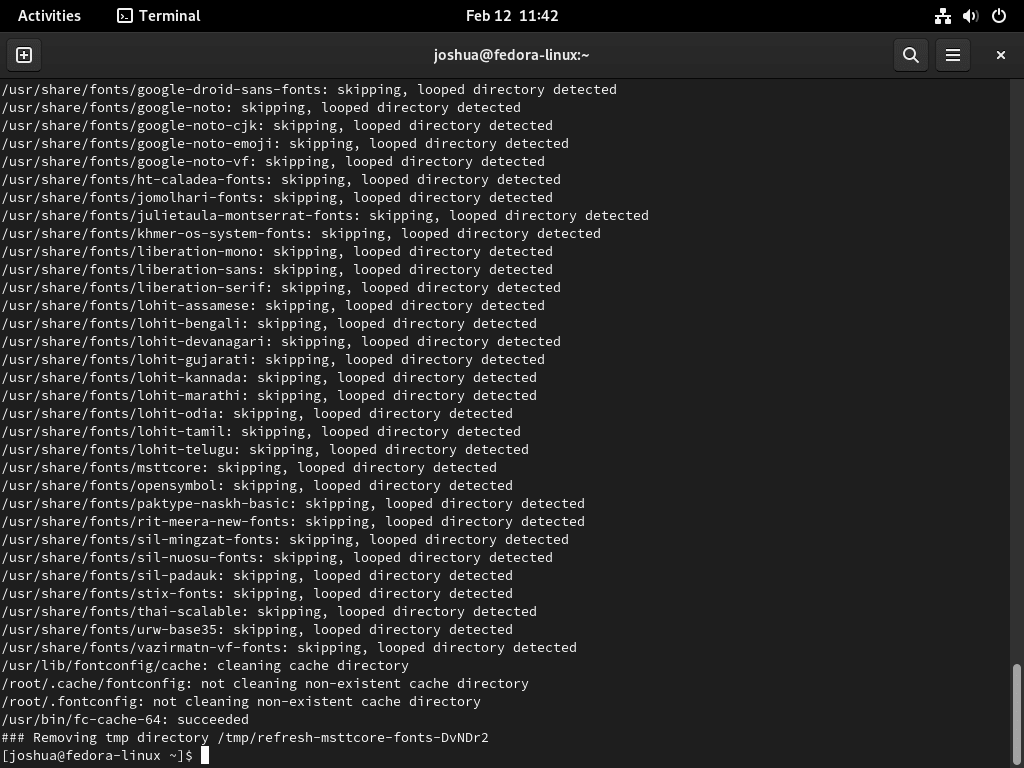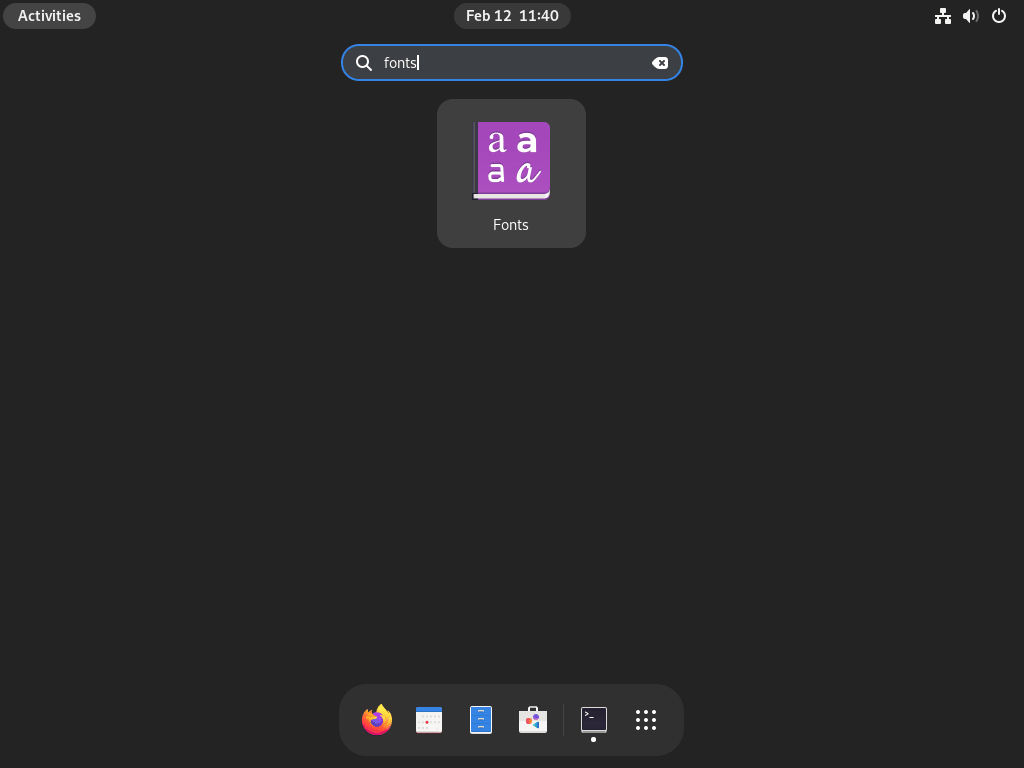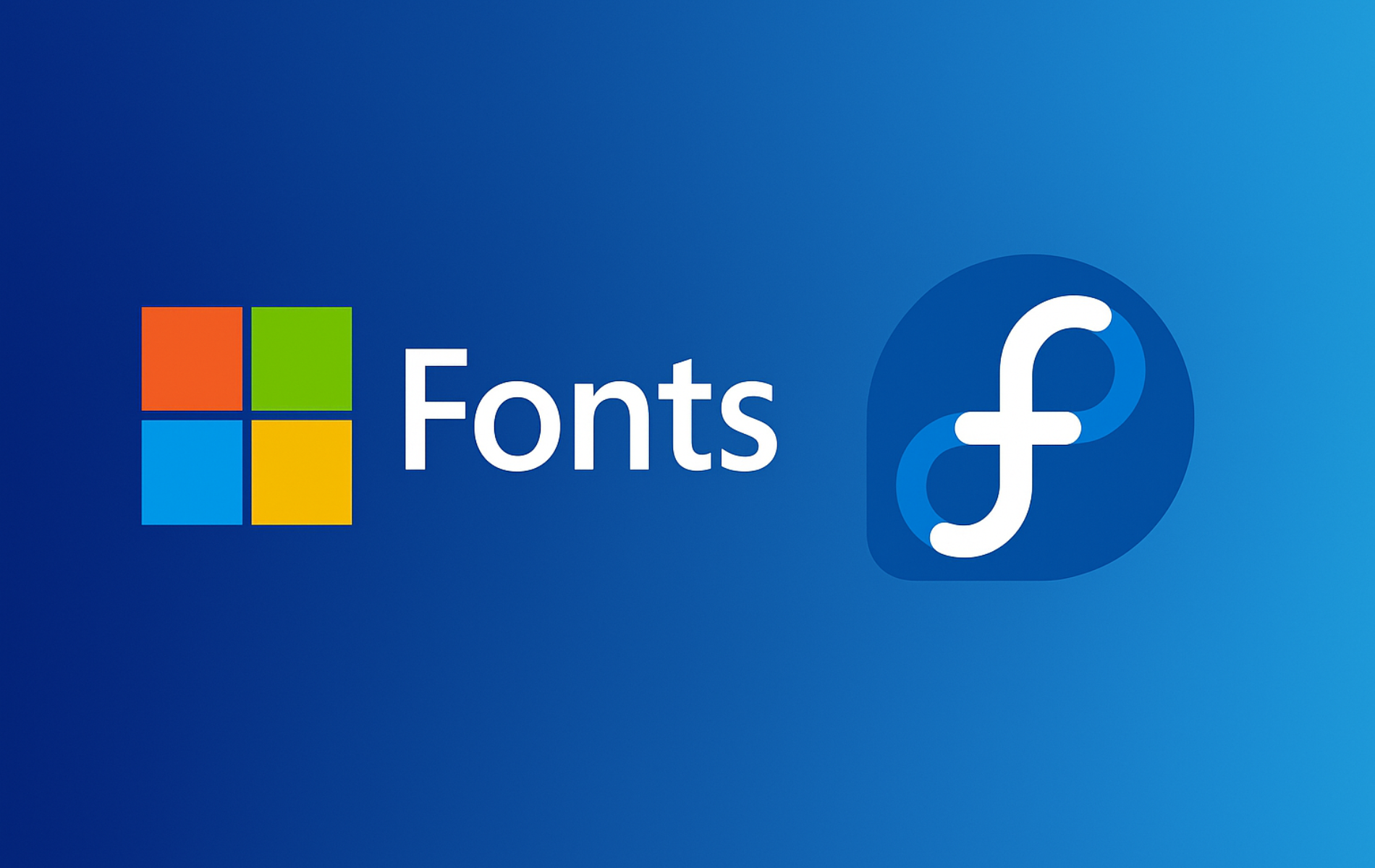Installing Microsoft fonts on Fedora provides essential compatibility with documents and web pages that rely on Arial, Times New Roman, Verdana, and other Microsoft TrueType fonts. Additionally, the msttcore-fonts-installer package offers a straightforward method to add these widely-used fonts to your system, ensuring proper rendering of documents created in Microsoft Office and similar applications.
Specifically, this guide covers installing Microsoft Core Fonts via the community-maintained mscorefonts2 project, verifying font availability through the Font Viewer application, and testing font rendering in your applications. The installation process works consistently across current Fedora releases using the standard RPM package method.
Update System Packages
Before proceeding with the installation, first update your Fedora system with DNF package manager to minimize potential compatibility issues. Then open your terminal and execute the following command to refresh and upgrade your system packages:
sudo dnf upgrade --refreshInstall Microsoft Fonts via msttcore-fonts-installer
Microsoft does not distribute official RPM packages for these fonts, so the installation uses a community-maintained package from the mscorefonts2 project. Consequently, this package downloads the original Microsoft font files from SourceForge mirrors and installs them to your system font directories.
Microsoft retains the license for these fonts, so the installer only downloads them for personal use directly from Microsoft’s redistribution packages on SourceForge mirrors. Ensure you have an active internet connection during installation and avoid repackaging or distributing the extracted font files separately.
Before installing Microsoft Fonts, ensure the necessary tools are available on your system. These tools include curl for downloading files, cabextract for extracting Microsoft font files, xorg-x11-font-utils for font management utilities, and fontconfig for managing font access. Furthermore, desktop Fedora installations typically include these packages by default, while minimal server installations or container environments may require manual installation.
After confirming the packages you need, use this command to install them:
sudo dnf install curl cabextract xorg-x11-font-utils fontconfigAfter confirming the prerequisites are installed, download and install the Microsoft Core Fonts package from the mscorefonts2 project. Moreover, DNF can install remote RPM packages directly, ensuring the fonts are tracked by Fedora’s package database. The msttcore-fonts-installer package includes these Microsoft Core Fonts:
- Andale Mono
- Arial (including Bold, Italic, Bold Italic)
- Comic Sans MS (including Bold)
- Courier New (including Bold, Italic, Bold Italic)
- Georgia (including Bold, Italic, Bold Italic)
- Impact
- Times New Roman (including Bold, Italic, Bold Italic)
- Trebuchet MS (including Bold, Italic, Bold Italic)
- Verdana (including Bold, Italic, Bold Italic)
- Webdings
Next, install the package with this command:
sudo dnf install https://downloads.sourceforge.net/project/mscorefonts2/rpms/msttcore-fonts-installer-2.6-1.noarch.rpmConfirm Microsoft Fonts Installation in Terminal
Following the installation command, Fedora displays a confirmation message indicating successful installation of the Microsoft Fonts package. Consequently, this output confirms that the fonts have been downloaded, extracted, and registered with your system’s font cache.

Verify Microsoft Fonts Installation
Verify Installation via Terminal
Next, confirm the Microsoft fonts installed correctly by listing them in the terminal:
fc-list | grep -i "Arial\|Times\|Verdana\|Courier"This command uses grep to search your system’s font cache for common Microsoft fonts. Therefore, you should see multiple matches showing font paths in /usr/share/fonts/msttcore/.
Verify via Fonts Application
Accessing the Font Viewer
Once the installation completes, the Microsoft Fonts integrate into your Fedora system and become accessible across applications. Afterwards, open the Font Viewer application to verify their presence:
- Click on “Activities” at the top left corner of your screen.
- Select “Show Applications” at the bottom of the sidebar.
- Type “Fonts” in the search bar or find the Fonts application icon and open it.

Confirming Font Installation
Within the Font Viewer, you can confirm the installation by searching for specific Microsoft Fonts. From there, type the names of widely recognized fonts such as Arial, Times New Roman, and Verdana to verify they appear in your system’s font library.
Checking Arial Font
For a quick check, type “Arial” in the search bar of the Font Viewer to confirm if the Arial font is available.

Checking Verdana Font
Similarly, search for “Verdana” to confirm the Verdana family installed correctly alongside the other Microsoft Core Fonts.
Checking Times New Roman Font
Lastly, verify the Times New Roman font by searching for it within the application.

Test Fonts in LibreOffice Writer
After confirming the fonts appear in GNOME Fonts, validate everyday application support by launching LibreOffice Writer and creating a new document. LibreOffice ships with most Fedora workstation images and mirrors the workflow users know from Microsoft Word.
- Press
Super(Windows key) and type “LibreOffice Writer,” then open the application. - Type a sentence, highlight it, and select Microsoft fonts like Arial, Times New Roman, or Verdana from the font drop-down list.
- Confirm the glyph previews change immediately and that the toolbar shows the selected Microsoft font name without fallback warnings.
When LibreOffice displays the Microsoft fonts and updates the text rendering without errors, desktop applications will handle imported Microsoft Office documents correctly.
Additional Commands with Microsoft Fonts
Remove Microsoft Fonts
When you need to uninstall Microsoft Fonts from your Fedora system for troubleshooting or system cleanup, the removal process is straightforward. Execute the following command in the terminal:
sudo dnf remove msttcore-fonts-installerAfterward, this command removes the msttcore-fonts-installer package along with all associated Microsoft Fonts from your system. After removal, applications will fall back to alternative fonts for documents that previously used Microsoft typography.
Conclusion
As a result, your Fedora system now includes essential Microsoft TrueType fonts for cross-platform document compatibility. The community-maintained msttcore-fonts-installer package provides Arial, Times New Roman, Verdana, and other widely-used fonts that ensure proper rendering of Microsoft Office documents, improve website display consistency, and match typography standards across Windows, macOS, and Linux systems.


Instructions were much easier than doing it by hand. Thanx
thanks worked for me
Worked perfectly. Thank you very much.
Thanks, there are no good tutorials to install the fonts on my Fedora. Post for those who do not have the app to check the font, run this command to install it “sudo dnf install gnome-font-viewer”
Thanks for sharing this, Fabian! That is a great tip for anyone running a minimal Fedora setup or a desktop environment that does not include the Fonts app by default.
If the Font Viewer is missing, install it with:
After installing
gnome-font-viewer, you can follow the steps in the “Verify via Fonts Application” section to check Arial, Verdana, Times New Roman, and the other Microsoft fonts visually. This is especially helpful alongside the terminal check withfc-list.